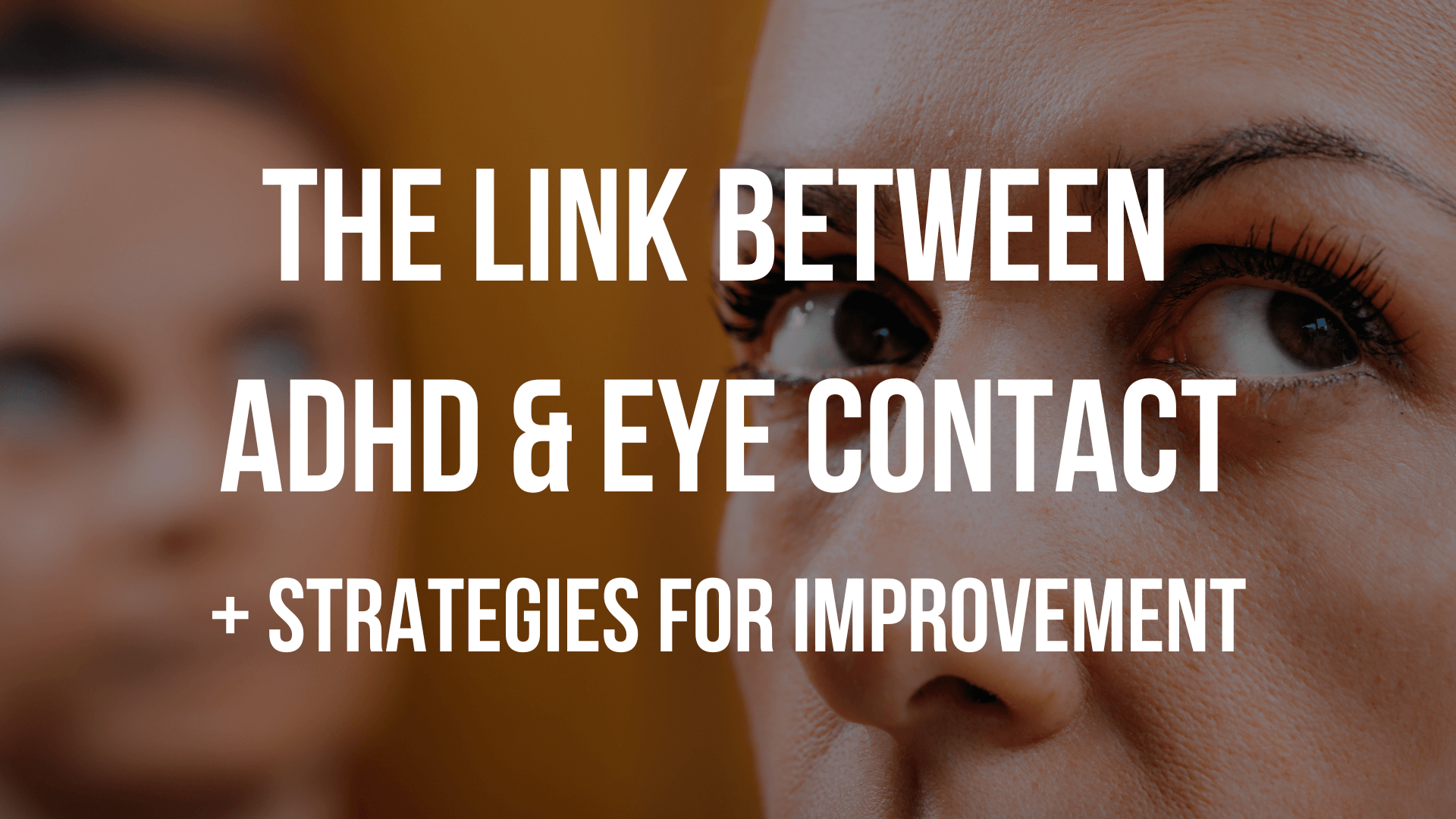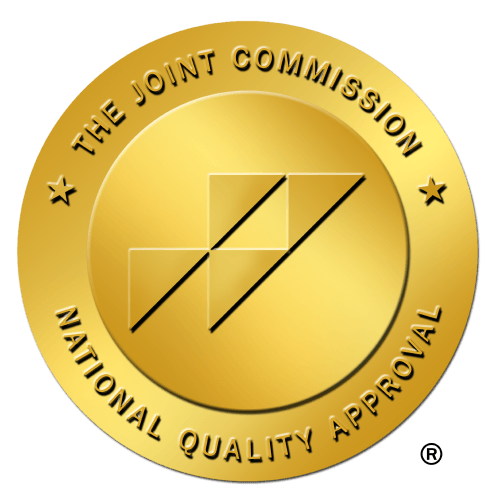The Link Between ADHD, Eye Contact, & Strategies for Improvement


Explore the nuances of eye contact in ADHD and learn effective strategies to not only improve interactions, but boost social confidence.
Recent Forbes data shows that about 8.7 million adults and 6 million children struggle with ADHD, a condition known for its challenges with impulsivity, hyperactivity, and maintaining concentration. One subtle yet significant issue that many individuals with ADHD face is maintaining eye contact, which can impact social interactions, and even self-esteem.
Get a quick overview of ADHD below, along with underlying reasons for these eye contact challenges, strategies for improvement, and more.
What Is ADHD?
ADHD, or Attention-Deficit/Hyperactivity Disorder, is a common neurodevelopmental disorder affecting millions of both children and adults. Its symptoms include hyperactivity, inattentiveness, and impulsivity — traits stemming from neurological and brain function variations. Often developing in childhood, about half of those affected carry these symptoms into adulthood, particularly when early signs are overlooked or untreated.
The symptoms of ADHD may seem mild and easy to dismiss, but without appropriate intervention, they can intensify over time. ADHD presents in three main subtypes:
Hyperactive/Impulsive ADHD: If you have this subtype, you might feel constantly on the go, filled with energy that makes it hard to sit still or remain quiet. It often includes acting without thinking and interrupting others.
Inattentive ADHD: Here, you may struggle with staying organized or meeting deadlines, easily losing focus over minor distractions. Following detailed instructions can be challenging, leading to procrastination.
Combination ADHD: As the name suggests, if this describes your experience, you exhibit characteristics of both hyperactive/impulsive and inattentive subtypes.
What Causes ADHD?
The exact causes of ADHD aren’t entirely understood, but medical experts agree that several factors can contribute to its development. These include:
Premature Birth: Being born early can sometimes lead to conditions like ADHD due to underdeveloped neurological systems.
Severe Brain Injury: Injuries to the brain, especially at a young age, can disrupt normal neurological development.
Substance Exposure During Pregnancy: If a mother smokes, drinks alcohol, or experiences significant stress during pregnancy, the risk of her child developing ADHD increases.
Environmental Toxins: Early exposure to certain environmental toxins, such as lead, can also play a role in the onset of ADHD.
Are You Struggling with Mental Health or Addiction?
We Can Help. Call Us Now!
CALL: 877-839-1772
Why Does ADHD Affect Eye Contact?
Eye contact is a critical component of communication, offering emotional connection, trust, and an understanding of others' expressions. However, for those with ADHD, maintaining eye contact can be notably challenging. Here are some reasons why:
Overwhelming Sensory Input: Individuals with ADHD often experience sensory overload. This makes it difficult for them to listen and maintain eye contact simultaneously, as both require significant cognitive effort.
Difficulty Reading Social Cues: The eye region is particularly expressive and can convey much about a person's emotional state. People with ADHD may find it hard to interpret these cues, complicating face-to-face interactions.
Social Skills Challenges: Many with ADHD struggle with social skills, which can include difficulties with eye contact. This doesn't mean improvement isn't possible — it just indicates that developing these skills can take time and practice.
Eye Contact in ADHD: Strategies for Improvement
Improving eye contact can be a significant challenge for those with ADHD, but it's a skill that can enhance communication and boost self-confidence. Here are some strategies to help improve eye contact for individuals with ADHD:
Practice Gradually: Start by practicing eye contact in non-stressful, low-pressure situations, such as with family or close friends. Begin with brief glances and gradually increase the duration of eye contact as comfort grows.
Use Visual Anchors: If direct eye contact feels too intense, try focusing on a spot close to the person's eyes, such as the bridge of their nose or their eyebrows. This can reduce discomfort while still creating the appearance of eye contact.
Mindful Listening: Often, difficulties with eye contact stem from a need to concentrate fully on listening. Practice active listening techniques, where you focus intently on what the other person is saying without the pressure to respond immediately. This can help you manage sensory overload and make eye contact more naturally.
Feedback and Adjustment: Ask for feedback from trusted individuals about your eye contact during conversations. Use this feedback to make small adjustments and improvements.
Professional Guidance: Engage with behavioral therapy or social skills training. Therapists can provide personalized exercises and feedback to help you develop better eye contact gradually.
Relaxation Techniques: Before engaging in a conversation, practice relaxation techniques such as deep breathing or mindfulness meditation. Reducing overall anxiety can make it easier to maintain eye contact during interactions.
Are You Struggling with Mental Health or Addiction?
We Can Help. Call Us Now!
CALL: 877-839-1772
How Is ADHD Treated?
Attention deficit hyperactivity disorder (ADHD) is a complex mental health condition, but it is important to remember that it is treatable with the right approaches. Here’s a breakdown of typical treatment strategies for managing ADHD:
1. Medications:
FDA-Approved Options: Commonly prescribed medications include Ritalin and Adderall, which are proven to help manage and reduce ADHD symptoms.
Personalized Treatment: Responses to medications vary, so it's crucial to work closely with your healthcare provider to find the most effective treatment for you.
Open Communication: Always inform your doctor about any side effects or changes you notice during your treatment.
2. Behavioral Therapies:
Talk Therapy: Particularly useful for adults, this involves one-on-one discussions about personal issues like self-esteem, work challenges, and relationship problems. It also addresses past traumatic experiences such as bullying or neglect.
Cognitive-Behavioral Therapy (CBT): This therapy helps you identify and change negative thought patterns and behaviors related to ADHD. It involves learning coping mechanisms and developing better self-management skills.
Family/Couple Therapy: These sessions are aimed at educating your loved ones about your ADHD, improving communication and strengthening relationships. It addresses common issues like impulsivity and poor time management.
3. Combining Treatments:
Integrated Approach: Effective ADHD management often requires a combination of medications and behavioral therapies to address both the symptoms and underlying mental health issues.
4. Supportive Environment:
Rehabilitation Programs: Many recovery centers offer specialized programs tailored to the needs of individuals with ADHD, providing a supportive environment for recovery.
ADHD & Eye Contact: Understanding the Link
ADHD may affect eye contact due to attention disruption, or because of how neurodivergence influences social cues processing – but with practice, this skill can improve. Eye contact is an important part of communication, and putting it into practice will only make it easier as time goes on.
If you or a loved one are facing any mental struggles, know that help is available. Contact us today to learn more about how our mental health services can make a difference in your journey.
Are You Struggling with Mental Health or Addiction?
We Can Help. Call Us Now!
CALL: 877-839-1772





